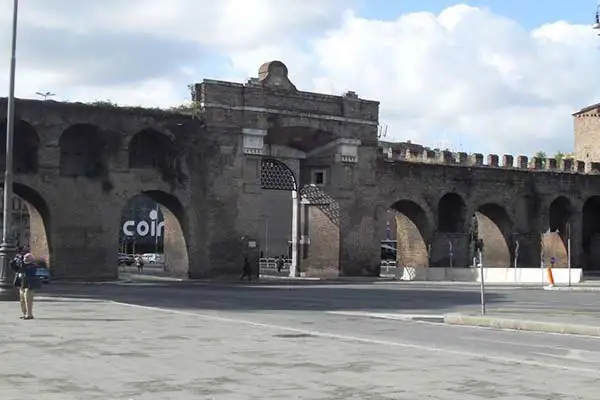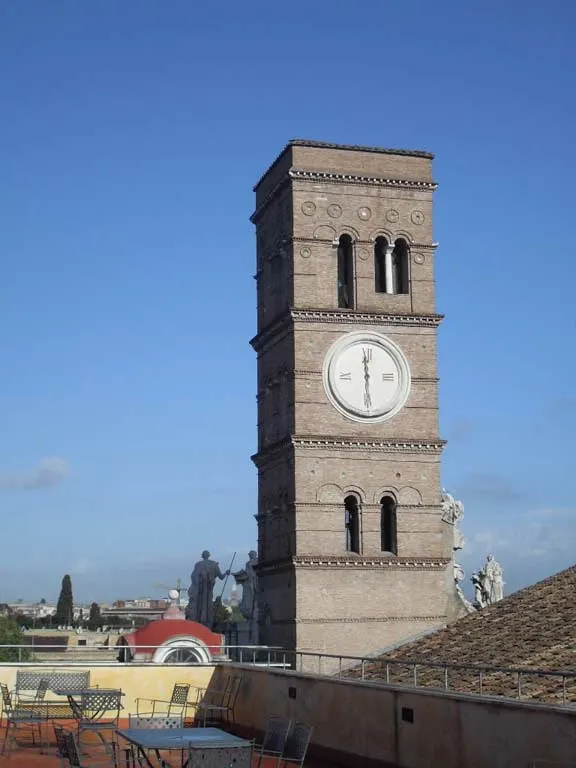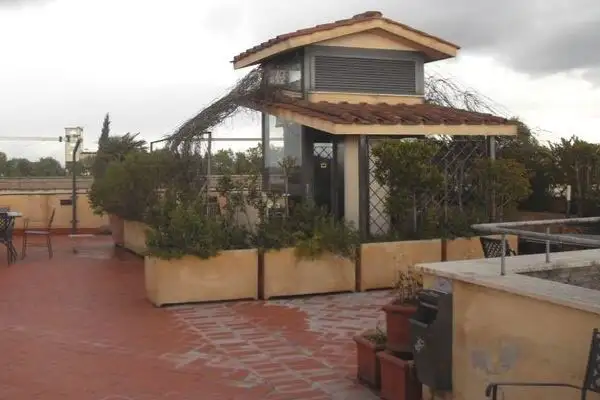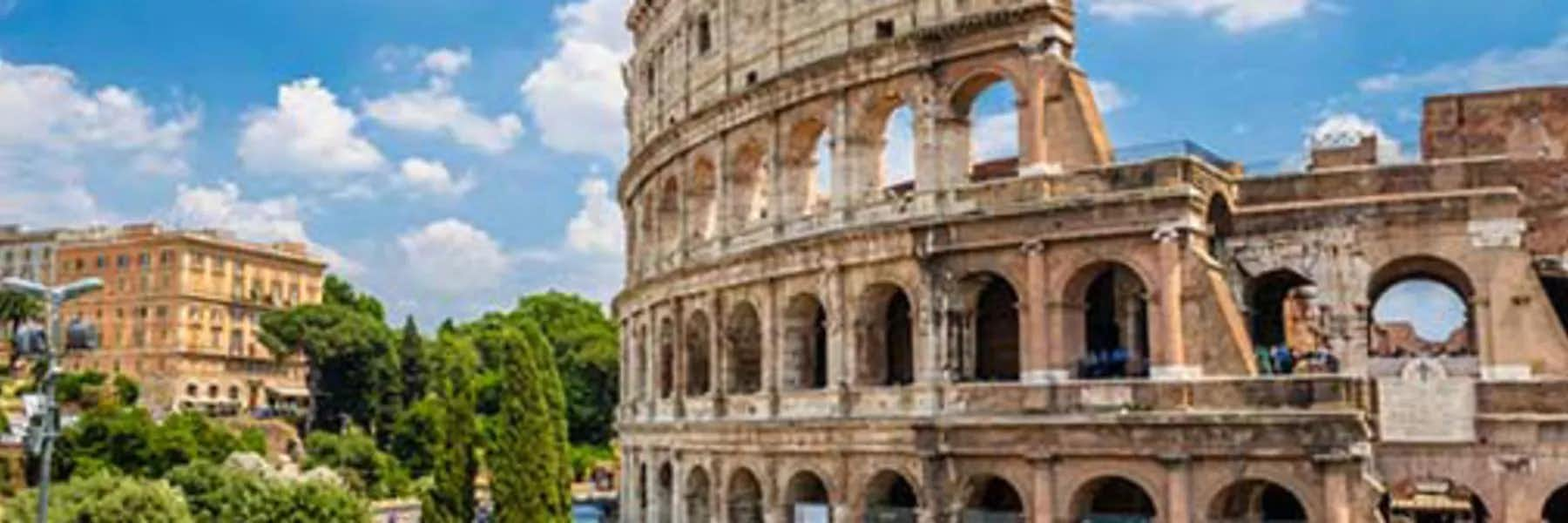One of the most memorable hotel stays I have ever experienced happened in Rome, Italy. Already excited to explore this ancient city on an anniversary trip, I could have hardly imagined the breathtaking hotel my husband, Domingo, and I would stay in. If you are looking for a unique experience that marries modern amenities with historical relics and ruins, then look no further. Domus Sessoriana Hotel will truly take you on a walk through Roman history. The 3-Star hotel, built in 1800, contains 80 rooms and is located in Piazza di Santa Croce in Gerusalemme, in the Equilino neighborhood. For the very modest price of around $65 a night, you will surround yourself with antiquity and history in a modern facility.
To truly appreciate this unique lodging, a little history lesson is in order. The Domus Sessoriana, built in the 326 AD, was formerly an Imperial complex known as Sessorium, to include a palace, Roman baths, a circus, and an amphitheater. The palace was the residence of Helena, the mother of Emperor Constantine the Great.
Part of the complex was converted to the Basilica de Santa Croce in Gerusalemme, or Basilica of the Holy Cross in Jerusalem, to house ancient relics Helena brought back during a pilgrimage to the Holy Land. Preserved there still today are pieces of wood from the cross, a nail, the Titulus (the inscribed tablet that hung over Jesus during the crucifixion), and two thorns from Christ’s crown. In addition, the Empress brought back soil from Jerusalem and covered the basilica floor with it; thus the name Holy Cross “in” Jerusalem.
The soil allows the basilica to sit “in” Jerusalem verses being a dedication to it. Over the years, the basilica underwent both transformation and restoration but the ancient walls of the complex still stand.
The Basilica is one of the Seven Pilgrims Churches of Rome and remains one of the most significant places of Christianity. This, in its own right, is a popular tourist attraction and Mass is still held there. No pictures are permitted in the basilica but, rest assured, it is amazingly beautiful and quite a thing to see.
In the 10th century, a monastery was built on the grounds. The single, double, triple, or quadruple rooms offered in the hotel are derived from the ancient cells inhabited by the Benedictines, Cistercians, and Carthusians monks. The walls and floors have been preserved from the old structure. The monastery is not open to the public and the last of the monks left in 2011, ending a 500-year presence at the Basilica.
Adjacent to the hotel are ruins of the Castrensian Amphitheatre, once used for courtly events and military exercises. Now, the elliptical space contains a monastic vegetable garden. The ruins are surrounded by a weathered but still-standing section of the Aurelian wall. The line of city walls were built between 271 AD and 275 AD during the reign of Roman Emperors Aurelian and Probus to protect the city against the threat of Germanic tribes.

The hotel itself consists of two blocks; the Conventual wing includes the first level with a hall, reception, reading rooms, a large conference room, and bathrooms. A modern elevator takes you up to the other four floors and the roof. The top level, or “attic,” houses smaller rooms with views out over the monastery and basilica bell tower.
The second block, the “Palazzina,” was developed on the architectural remains of the Amphitheatre and houses five furnished floors.
Even though the hotel is located near busy city streets, we had a comfortable, peaceful, relaxing, and private experience. Nearby are many dining options, a market, a hospital, and a laundromat. Within walking distance, you will find easy access to public transportation by bus or train. There is a city bus stop right outside the hotel and the Termini railway station is only a short walk away. From the hotel, we could get to the Colosseum within a few minutes by bus or in about 20 to 30 minutes by walking.
The multilingual 24-hour front desk staff very helpful in suggesting attractions and local transportation methods.
We found the free continental breakfast each morning consisting of various cheeses, assorted fruit, pastries, bread, coffee, tea, and juice to be the perfect start to a day of Roman sightseeing.
From our room, located on the top floor of the hotel, we could open the windows and see out onto the city street. The piazza buzzes with passersby, restaurants, and shops, yet right outside, almost within arm’s reach, are remnants of a time long, long ago. It is very humbling.

From the rooftop terrace we enjoyed a stunning view across the city and of the Basilica of San Giovanni di Laterano (the cathedral church of the Diocese of Rome), as well as the ruins of the Amphitheatre. Rooftop dining is also available.

Despite the Domus Sessoriana being full of historic architecture and Roman history, the modern hotel facility has everything one could need or expect with top-of the line lodging.
If you are a history buff or just want to enjoy an unusual and unique lodging experience, this is a great way to experience an authentic Roman holiday.
Related Articles
All You Need To Know About Italy
